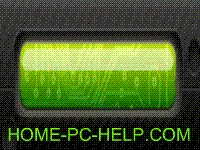Transistor Theory
You should recall from an earlier discussion on transistor theory that a forward-biased PN junction is comparable to a low-resistance circuit element because it passes a high current for a given voltage. In turn, a reverse-biased PN junction is comparable to a high-resistance circuit element.
By using the Ohm's law formula for power (P = I2R) and assuming current is held constant, you can conclude that the power developed across a high resistance is greater than that developed across a low resistance.
Thus, if a crystal were to contain two PN junctions (one forward-biased and the other reverse-biased), a low-power signal could be injected into the forward-biased junction and produce a high-power signal at the reverse-biased junction. In this manner, a power gain would be obtained across the crystal.
This concept, which is merely an extension of the material covered in section 1, is the basic
transistor theory
behind how it amplifies. With this information fresh in your mind, let's proceed directly to the NPN transistor.
NPN Transistor Operation
Just as in the case of the PN junction diode, the N material comprising the two end sections of the NP N transistor contains a number of free electrons, while the center P section contains an excess number of holes. The action at each junction between these sections is the same as that previously described for the diode; that is, depletion regions develop and the junction barrier appears.
To use the transistor as an amplifier, each of these junctions must be modified by some external bias voltage. For the tran-sistor to function in this capacity, the first PN junction (emitter-base junction) is biased in the forward, or low-resistance, direction. At the same time the second PN junction (base-collector junction) is biased in the reverse, or high- resistance, direction.
A simple way to remember how to properly bias a transistor is to observe the NPN or PNP elements that make up the transistor. The letters of these elements indicate what polarity voltage to use for correct bias. For instance, notice the NPN transistor below:

NPN transistor.
1. The emitter, which is the first letter in the NPN sequence, is connected to the negative side of the battery while the base, which is the second letter (NPN), is connected to the positive side.
2. However, since the second PN junction is required to be reverse biased for proper transistor operation, the collector must be connected to an opposite polarity voltage (positive) than that indicated by its letter designation(NPN). The voltage on the collector must also be more positive than the base, as shown below:

NPN transistor forward bias.
We now have a properly biased NPN transistor.
In summary, the base of the NPN transistor must be positive with respect to the emitter, and the collector must be more positive than the base.
NPN FORWARD-BIASED JUNCTION
An important point to bring out at this time, which was not necessarily mentioned during the explanation of the diode, is the fact that the N material on one side of the forward-biased junction is more heavily doped than the P material.
This results in more current being carried across the junction by the majority carrier electrons from the N material than the majority carrier holes from the P material. Therefore, con-duction through the forward-biased junction, as shown in the figure below, is mainly by majority carrier electrons from the N material (emitter).

The forward-biased junction in an NPN transistor.
With the emitter-to-base junction in the figure biased in the forward direction, electrons leave the negative terminal of the battery and enter the N material (emitter). Since electrons are majority current carriers in the N material, they pass easily through the emitter, cross over the junction, and combine with holes in the P material (base). For each electron that fills a hole in the P material, another electron will leave the P material (creating a new hole) and enter the positive terminal of the battery.
Become a loyal member to our site. It's free!
Site Search


Translate your page
If English is not your first language you can Translate the text on this page to any one of the languages found in the drop down menu. Select your language from the list for an instant translation.
Looking for something unique for your project? Choose from the drop down menu for quick access to the item you seek.
Related Pages
Become an Electronics Technician
Convert most anything with this utility
Find your wire and cable here!
Sponsored Sites


If you like this site please pay it forward. Donations are welcome.












